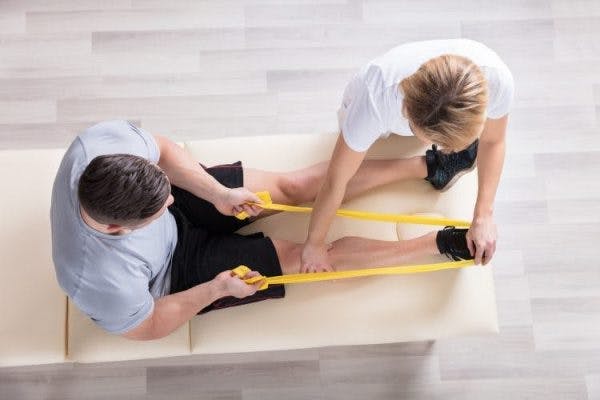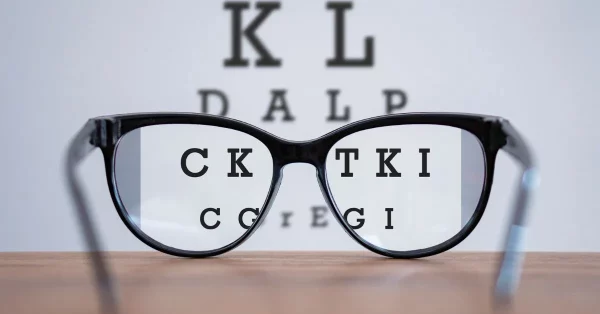Fatigue after stroke affects many survivors and is different from normal tiredness. While some people with fatigue feel better after a nap, stroke survivors might not feel energized even after a full night’s rest or daily naps.
Post-stroke fatigue can affect anyone. Whether survivors are young or old, active or sedentary, male or female, this fatigue can be debilitating. Fortunately, there are ways to combat fatigue and stay motivated on the road to recovery.
To help you better understand why this overwhelming tiredness occurs, this article will explain the causes of fatigue after stroke. Additionally, we will review common symptoms and treatments to help increase energy levels.
Causes of Fatigue After Stroke
Physical Factors
The exact cause of post-stroke fatigue varies from person to person and is often a combination of factors. One example from the Stroke Association is that the body uses energy differently after stroke. In addition to the energy needed for your brain to heal, the body may have increased energy demands for once-simple movements and tasks.
For example, there are many possible secondary effects of stroke, such as hemiplegia and hemiparesis. These terms refer to paralysis or weakness of one half of the body and can contribute to fatigue after stroke. If a leg has become difficult to move, then it will take more energy to walk or stand. Similarly, it will take more energy to use your arm for daily activities such as dressing and cooking if the arm has been affected.
Another major contributor to fatigue following stroke is sleep disturbance and poor sleep quality. It is estimated that over 50% of stroke survivors are affected by a sleep disorder following stroke, which has major implications for fatigue levels.
These sleep disturbances can be the result of a disrupted sleep-wake cycle, changes in daily routine, or impaired breathing due to sleep apnea. Additionally, medication side effects can lead to sleep changes and fatigue.
Mental and Emotional Factors
Fatigue after stroke can be a secondary condition that stems from other stroke-related complications. For example, coping with post-stroke pain can require an enormous amount of energy. This can deplete energy levels quickly, contributing to fatigue.
Fatigue can also be exacerbated by emotional factors. Anxiety, depression, and other emotional experiences such as grief after stroke can each contribute to fatigue in their own way. Furthermore, many survivors experience increased stress due to the many life changes that can accompany stroke, including reduced independence.
Additional Considerations
Age and physical fitness levels before stroke are not directly correlated with post-stroke fatigue. Although women and older individuals are more likely to experience post-stroke fatigue, it is even possible for a young “fit” male stroke survivor to experience more fatigue than the average person.
Also, the size of a stroke is not correlated with the severity of post-stroke fatigue. Someone that survived a massive stroke could have little fatigue, while a mild stroke survivor may feel tired all the time. However, there is some data that suggests fatigue after stroke may be more common after a stroke in the right hemisphere of the brain or the brainstem.
With so many factors involved, how do you know if you are experiencing post-stroke fatigue? To help you determine if you may be affected by increased fatigue after stroke, the next section of this article will discuss common symptoms. Remember, this is not a strict diagnosis tool but can help you have a discussion with your doctor or adjust your daily habits to reduce fatigue.
Quick Summary
When it takes more energy to move your body or cope with emotions after stroke, it can contribute to post-stroke fatigue. Fatigue after stroke can also be caused by changes in sleep or medications.
Symptoms of Post-Stroke Fatigue
A recent systematic review of 48 studies concluded that around 48% of survivors experience fatigue after stroke. Therefore, if you find yourself struggling with this symptom, know you’re not alone
Fatigue after stroke is different from simply feeling tired after a long day. Instead, this condition is characterized by severe weariness or lack of energy. Many survivors affected by increased fatigue note cognitive symptoms as well, such as the feeling of “brain fog.”
Some patients with post-stroke fatigue report “hitting a wall” where their energy levels crash. It can happen after certain activities or suddenly during the day. For this reason, activities of daily living can become taxing and exhausting, even if they were simple before the stroke.
Fatigue after stroke is also associated with physical disability, likely because low energy interferes with rehabilitation. This can make participation in exercise, social activities, and hobbies challenging. Fortunately, by understanding the causes of fatigue you can identify ways to improve your symptoms.
Quick Summary
Fatigue after stroke can result in crashing energy levels throughout the day and is not always associated with demanding activities. Post-stroke fatigue can make participation in rehabilitation difficult.
Managing Fatigue After Stroke
Fatigue after stroke can feel overwhelming and, at times, debilitating. However, there are ways to reduce fatigue and conserve energy levels to improve quality of life. To help you get started, here are some tips that can help you manage post-stroke fatigue:
1. Talk to Your Doctor
Fatigue is common during inpatient rehabilitation where you’re working hard for hours each day. However, if fatigue is still affecting you after discharge, then it’s important to talk to your doctor. They can diagnose your condition and suggest treatment methods to address your unique symptoms.
As we mentioned earlier, fatigue can be a side effect of certain medications. Check to see if fatigue is listed as a side effect of any of the medications you are taking. If so, talk to your doctor about your symptoms. They may be able to switch medications or offer other ways to improve fatigue.
Even if you’re certain your medication is contributing to your fatigue, always talk with your doctor before making any medication changes. Discontinuing a medication suddenly without consulting your doctor can lead to serious consequences.
2. Conserve Energy
An occupational therapist may be able to help you with energy conservation strategies to limit fatigue after stroke. These strategies involve simple changes to your daily routine that help conserve energy and reduce fatigue.
The 4P’s of energy conservation are:
- Prioritize which activities are most important to complete.
- Plan the best way to complete those activities (e.g. making a grocery list before shopping or cooking enough food to have leftovers).
- Pace yourself by spacing out more taxing activities throughout your day and week. Focus on steady breathing throughout the activities.
- Position (or posture). Pay attention to your positioning. Try to perform some activities sitting, as this requires less energy than standing.
Be mindful of your rehabilitation exercises or household chores. Performing rehab exercises after stroke is crucial, but try not to do too much at once. Over-exerting yourself can increase your overall fatigue levels.
Sometimes post-stroke fatigue has delayed onset. If you push hard one day, you may experience significant fatigue the next day. To prevent this burnout, take breaks throughout the day and stay mindful of your energy levels.
3. Keep an Energy Journal
Consider keeping a journal of your activities and energy levels to help monitor fatigue after stroke. You may find patterns, like feeling fatigued the day after strenuous activity.
Identifying these patterns can help you plan your daily routine with a healthy balance of recovery-boosting activity and rest. Additionally, this journal can be helpful for your doctor if you are discussing medication changes. Knowing when your energy levels are high or low is a helpful tool to use when combating fatigue.
4. Make Exercise a Habit
Exercise is a surprising but necessary intervention for fatigue after stroke. Even though exercise takes energy, this can help build stamina and reduce fatigue long-term. Additionally, exercise after stroke can be modified for any ability level. Talk to your physical therapist to create an exercise program that helps you reach your own unique goals.
Aerobic exercise such as walking, arm or leg cycling, and swimming can improve cardiovascular health and reduce the risk of a second stroke. Additionally, one study suggests that treadmill training “lowers the energy cost of hemiparetic gait.”
As you become stronger, you may notice that it takes less energy to move around. Combined with the energy boost exercise provides, this can help relieve fatigue after stroke. Start slow and increase your duration gently to see the best results.
5. Eat Well
Your diet has a huge impact on your energy levels and can be a valuable tool to address fatigue after stroke. For example, consuming sugary foods causes blood sugar to spike and then drop, which causes tiredness and a “crashing” feeling.
To avoid diet-induced fatigue, focus on eating healthy foods for stroke recovery like fresh fruits and vegetables, lean protein, and whole grains. Additionally, staying hydrated can help you boost your energy levels and fight fatigue.
6. Make Sleep a Priority
As we mentioned earlier in this article, many survivors experience sleep disturbances that can increase fatigue after stroke. However, sleep is one of the most important resources for the brain during the healing process. That is because sleep is a valuable tool to help boost neuroplasticity, which is the brain’s ability to rewire neural pathways.
While fatigue doesn’t always immediately improve with sleep, practicing healthy sleep habits can increase energy levels over time. This includes strategies like implementing a set bedtime routine, creating a calm, dark environment for sleep, and reducing caffeine intake.
7. Focus on One Thing at a Time
Multitasking can be a mental and physical energy drain, especially in the early stages of stroke recovery. While the brain heals, it can be challenging to focus on multiple tasks at once. This overstretching of your energy resources can contribute to fatigue after stroke.
Stay mindful of your attention and try to focus on one thing at a time, going slowly at first. Additionally, it can be helpful to reduce distractions in your environment, such as loud sounds, bright lights, and stimulation from electronic devices.
8. Prioritize Psychological Health
Post-stroke fatigue can be a combination of physical and emotional factors. Depression and anxiety are common among survivors, and both can increase levels of fatigue. Additionally, cognitive and behavior changes after stroke can be frustrating or distressing.
If you are experiencing any of these symptoms, it is important to seek help. Talk with your doctor about potential options to address your symptoms. Treatments like talk therapy or certain medications can be incredibly helpful for improving your mental and emotional health after stroke. In turn, this can help reduce fatigue and improve your quality of life.
Getting Support for Post-Stroke Fatigue
Many survivors experience increased fatigue, and this can be caused by a combination of factors. Sleep disruption, emotional changes, and increased energy requirements for movement can all contribute to reduced energy levels after stroke.
If you are affected by fatigue after stroke, you can reach out for help from your family, friends, and medical team. There are many tools available to help you conserve energy and decrease your fatigue level. This includes regular exercise, a healthy diet, changes to your daily routine, and prioritizing sleep.
If you experience secondary effects like post-stroke pain or paralysis, your therapy team can help. Furthermore, your doctor may be able to adjust your medication if fatigue is listed as a side effect of any current prescriptions.
Ultimately, every survivor is unique and you will need to find the combination of treatments that addresses your specific symptoms. Fatigue following stroke may be common, but it is not untreatable. Remember to pace yourself, rest when needed, and keep pursuing recovery.










